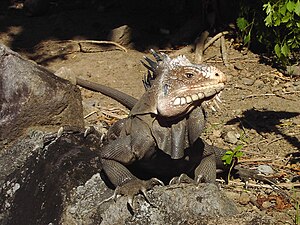Kangaroos are herbivorous marsupials which are native to Australia Australia
There are four main species of Kangaroo. The table bellow displays the names as well as their habitat:
Specie name
|
Habitat
|
Other information
|
Red Kangaroo
|
The arid and semi-arid
|
-Up to 2 meters tall
-Up to 90 kilograms
|
Eastern Grey Kangaroo
|
The fertile
| |
Western Grey Kangaroo
|
-Southern part of
-
|
-Up to 54 kilograms
|
Antilopine Kangaroo
|
Note: From top to bottom the specie’s physical feature (height and weight) decreases.
Male kangaroos are called bucks, boomers or jacks, females are called flyers or jills and young ones are called joeys. A group of kangaroos is called a mob, troop or court. These marsupials have large and powerful hind legs, large feet which are adapted for leaping and a long and muscular tail which aids kangaroos in keeping balance. The tendons (rope like feature which attaches the bone and muscle) of the hind legs of kangaroos are long and stretchy and can store a lot of elastic energy. This reduces muscle involvement and effort when leaping.
Like other Marsupials, female kangaroos have pouches which are also called marsupium. After a gestation period of approximately 31 to 36 days, a very small joey which has only somewhat developed forelimbs makes its way into the pouch. It will stay in the pouch for about 9 months for the postnatal development to complete. The joey will feed off its mother’s milk during the 9 months in the pouch and about 9 months after it comes out.
A female kangaroo is always pregnant which means that a new born can exist while a joey is still in the pouch. In these situations the female has the ability to pause the development of the new born (or embryo as it is also called) until the joey leaves the pouch. This act which is called diapause, happens in places where food and water rates are low. At these times, the mother can produce two different types of milk simultaneously (one for the new born and the other for the joey).
The average life expectancy of kangaroos is 4 to 6 years.
Some kangaroos are nocturnal (active at night time) and others are crepuscular (active in twilight which is just before sunrise and times between sunset and full night). They often spend the days resting in shades.
Kangaroos are herbivorous and eat foods such as grass, shrubs, fungi etc. The kangaroo has few predators including dingoes and foxes.
They can defend themselves by using their powerful hind legs to kick or if close to water they will demonstrate their swimming talent and attempt to hold the creature under water (with the use of its forehands) until it drowns. They are also keen runners and can reach top speeds of 70 km/h.
The conflict of kangaroos with cars, mostly happens at twilight hours. One reason is that, the kangaroos come to feed at these times and the second reason is that their eyes get blinded when the headlight of vehicles point towards them. This startles them and increases the chance of them jumping towards the car.








